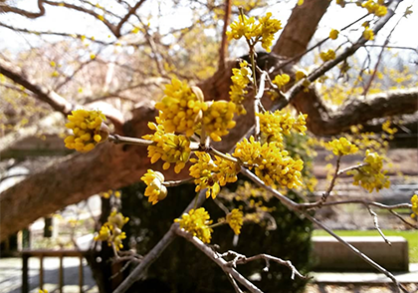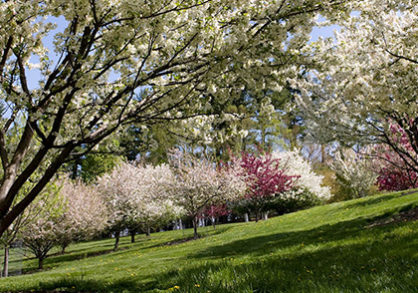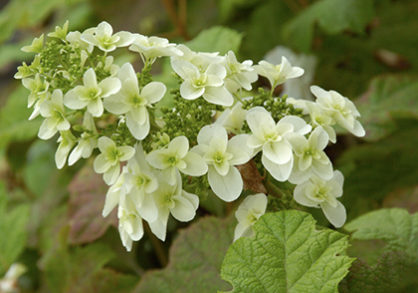
Sassafras (Sassafras albidum) is a North American tree steeped in Indigenous culture throughout its range within deciduous woodlands of the northeast and southeast United States. Indigenous names for the tree include kvfi, pauame, and winauk. Sassafras is not as abundant as other trees in area forests, yet it grows in small numbers in several of Cornell Botanic Gardens’ natural areas.
The origin of the name sassafras is difficult to pinpoint but date to a mispronunciation by 16th century European explorers of the botanical family Saxifrage.
Sassafras has a long history of use among Indigenous people of North America, who have used its leaves, root bark, and wood in a variety of ways. The root bark has long been enjoyed as a flavorful hot or cold tea and also used as a traditional remedy for treating a variety of illnesses, including common head colds and fevers, and as a digestive aid and general restorative tonic for overall health.
Indigenous people have long known that Sassafras leaves are edible. The Choctaw, whose traditional homeland includes Mississippi, Louisiana, parts of Alabama, and the panhandle of Florida, are known for using dried, powdered sassafras leaves to thicken soups and stews. During the 18th century, enslaved West Africans in Louisiana melded their rich food traditions with Native American and European culinary influences, resulting in Louisiana Creole cuisine. Food writer Robert Moss explains in his article, The Real Story of Gumbo, Okra, and Filé, at SeriousEats.com, that gumbo recipes thickened with okra, a traditional West African vegetable, are known as feví gumbo; gumbo thickened with powdered sassafras is known as filé gumbo.
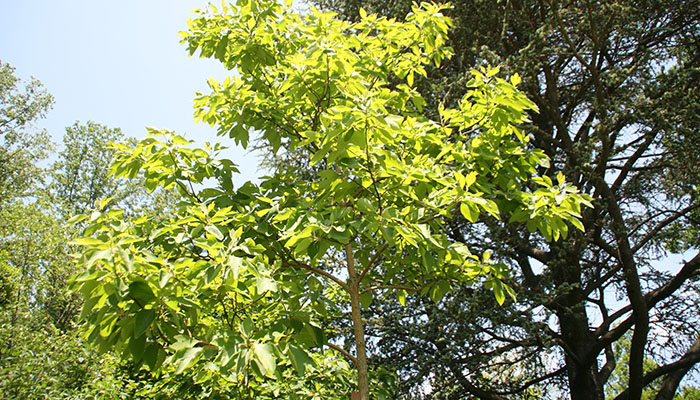
In the northern U.S, sassafras trees are relatively small in stature, but in the South, they can grow 50 feet-to 80 feet or more. The sawn lumber of sassafras has been used as flooring, door frames, kitchen cabinets, and furniture. The wood has also been used to make boats, fence posts, and barrels, due to its reputation for being resistant to decay.
Above ground, Sassafras has many admirable features, but its most noteworthy characteristic lies beneath the soil. Cinnamon-colored bark that contains safrole, an aromatic oil cherished for its spicy scent covers the tree’s roots. Its scent is a combination of star anise, cinnamon, citrus, and vanilla. The bark has imparted its flavor to fragrant tea, soft drinks, and its extracted oil has been used to scent candles, soaps, and perfumes. However, safrole is considered a carcinogen and has been banned for human consumption by the Food and Drug Administration since the 1960s.
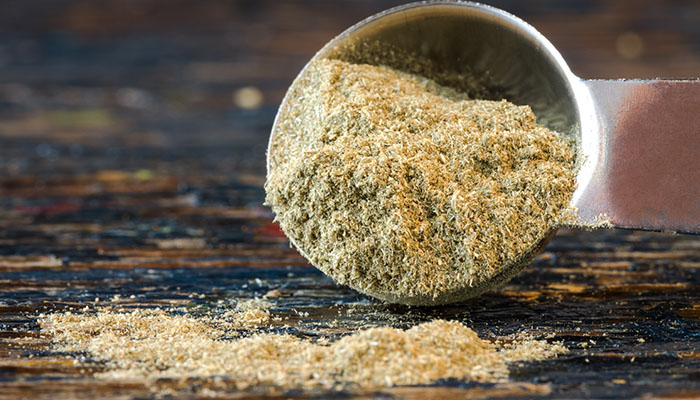
In the late 19th century, sassafras tea evolved into a refreshing soft drink, thanks to Philadelphia-based pharmacist, Charles Hires. Aromatic sassafras root bark was one of many botanical ingredients in Hires original root beer recipe, which was promoted as a healthy alternative to hard liquor and other alcohol-based drinks. Root beer is still enjoyed as an All-American soft drink today!
Sassafras is deserving of praise in the wild, as well as in cultivated landscapes. The tree is dioecious, in other words, there are female and male trees. Female trees produce small yellow flowers, which bloom between March and April, followed with dark blue berries attached to vivid red pedicels, from late summer into fall. Its leaves can have three different shapes: a simple oval, three-lobed, and a signature mitten-shaped leaf. In the fall, the leaves turn vibrant colors that range from yellow, burgundy, crimson, and orange hues. The tree’s roots produce sprouts or suckers resulting in groves or thickets along the edges of fields and forests. A mass of sassafras trees glowing with brilliant fall colors and sporting dark blue berries on red pedicels are a colorful addition to a woodland garden. The berries are a source of food to wildlife. Birds eat and disperse the seeds to other areas. The spicebush swallowtail butterfly has been observed to lay its eggs on sassafras trees, and when hatched, the caterpillars feed on the leaves.
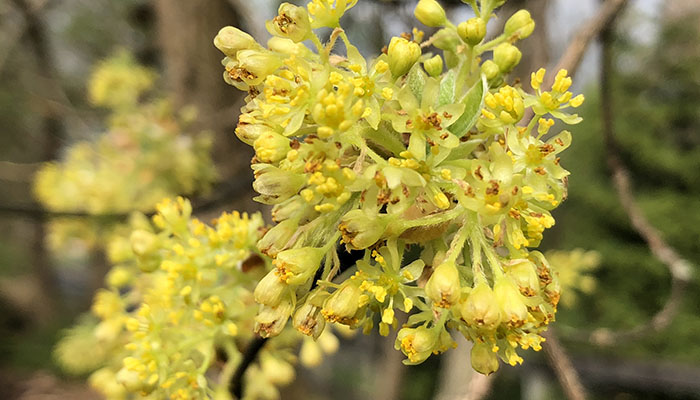
Fall is the ideal time to look for the characteristic mitten-shaped leaves of the sassafras tree while the leaves are their most colorful, and it is among good company with other North American trees in our beautiful woodlands.
Spring Spotlight: Cornelian Cherry
The cornelian cherry tree is a main attraction in our Groundcover Collection and is one of the first plants to bloom in early spring.
Flowering Trees: expressing love, loyalty, and kindness across centuries and cultures
May is approaching, which brings our attention to the eye-catching blooms of ornamental apple, magnolia, […]
Hydrangeas: Stars of late summer
While undeniably beautiful, the symbolic meaning of hydrangea varies considerably among different cultures.
